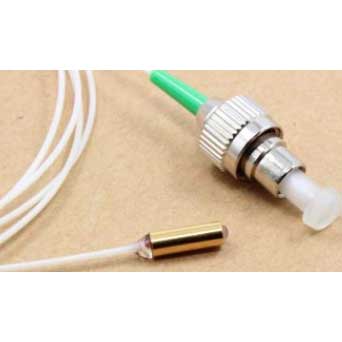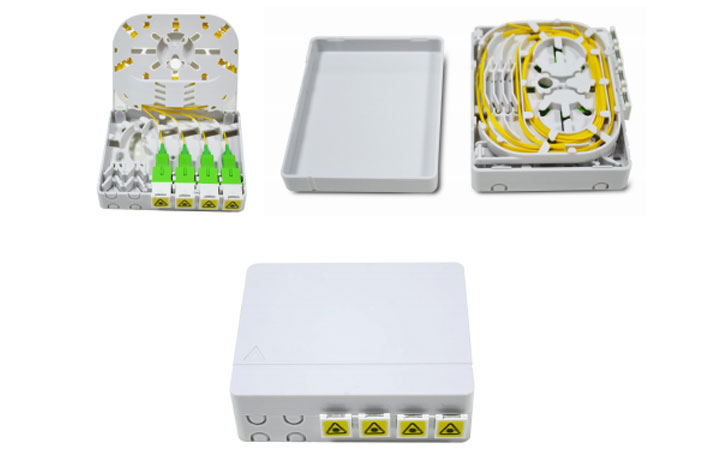As fiber-optic technology continues to advance at a rapid pace, the demand for efficient, reliable, and high-performance components in telecommunication networks has never been greater. One such critical component that stands out in this landscape is the PLC (Planar Lightwave Circuit) splitter. Renowned for its precision and reliability, the PLC splitter plays a vital role in optimizing the distribution of optical signals across various network configurations. This article delves into the intricacies of PLC splitters, exploring their working principles, diverse types, wide-ranging applications, and numerous advantages.
What Is a PLC Splitter?
A PLC splitter is an optical power management device used in fiber-optic networks to split an optical signal into multiple outputs. Unlike traditional fused biconical taper (FBT) splitters, PLC splitters are fabricated using silica glass waveguide technology, which involves creating optical waveguides on a flat substrate using photolithography and etching techniques. This technology ensures precise and efficient splitting of optical signals. These splitters are essential for distributing optical signals in various applications, especially in passive optical networks (PON) and fiber-to-the-home (FTTH) networks.
How Does a PLC Splitter Work?
Core Technology: Waveguides
The essential technology behind PLC splitters, manufactured by plc splitters suppliers, is the waveguide, a physical structure that directs light waves from one point to another. These waveguides are fabricated using silica glass on a silicon substrate through a process similar to semiconductor manufacturing, which ensures precision and reliability.
Splitting Mechanism
1. Input Fiber: The process begins with an optical signal being fed into the splitter via an input fiber. This fiber channels the light into the integrated waveguide structure on the chip.
2. Waveguide Structure: Inside the PLC splitter, the waveguide network is designed to divide the optical signal. The input signal travels through the waveguide, which is engineered with branching pathways. These pathways are meticulously arranged to ensure that the light is evenly split among the output channels.
3. Light Splitting: As the light travels through the waveguide, it encounters Y-branches at specific intervals. Each Y-branch divides the light into two separate paths. This process is repeated multiple times depending on the splitter ratio (e.g., 1x2, 1x4, 1x8, etc.), effectively splitting the input signal into the desired number of outputs.
4. Output Fibers: The split signals are then directed into multiple output fibers. Each output fiber carries a portion of the original optical signal to its destination.
Types of PLC Splitters
PLC splitters are categorized based on their splitting ratios and packaging:
Splitting Ratios:
1xN Splitters: One input and N outputs, where N can be 2, 4, 8, 16, 32, or 64.
2xN Splitters: Two inputs and N outputs, used for redundancy and load sharing.
Packaging Types:
Bare Fiber PLC Splitter: Minimal packaging, mainly used for integration into fiber management systems.
Blockless PLC Splitter: Compact design without a protective box, suitable for space-constrained installations.
ABS Box PLC Splitter: Enclosed in an ABS plastic box for added protection, ideal for outdoor or rugged environments.
LGX PLC Splitter: Encased in a standard LGX module. Easily mountable in patch panels or distribution boxes.
Rack-Mount PLC Splitter: Mounted on a rack for organized deployment in data centers or telecommunication rooms.
Applications of PLC Splitters
FTTH (Fiber to the Home): PLC splitters distribute optical signals from the central office to multiple homes, enabling high-speed internet, TV, and telephone services.
PON (Passive Optical Networks): Used in PON architectures like GPON and EPON, PLC splitters efficiently split signals to serve multiple end-users from a single optical line terminal (OLT).
Data Centers: Facilitate high-speed data transmission between servers and storage systems by distributing optical signals across multiple connections.
Optical Sensing: Employed in distributed optical sensing systems for applications like temperature and strain monitoring.
Advantages of PLC Splitters
1. Wavelength Insensitivity
PLC splitters can handle different wavelengths without affecting performance, making them versatile for various network applications.
2. Uniform Signal Distribution
They ensure even distribution of optical signals across all output ports, which is essential for maintaining consistent signal quality.
3. Compact and Space-Efficient Design
Their compact size allows easy installation in existing spaces without needing special adjustments, saving valuable installation space.
4. High Channel Count
A single PLC splitter can support many output channels, often more than 32, allowing efficient management of multiple connections.
5. Cost-Effectiveness
PLC splitters are cost-effective, especially in multi-channel setups. The cost advantage increases as more branches are added, making them economical for large-scale deployments. Besides, with no moving parts, PLC splitters are very reliable and have a long operational lifespan, reducing maintenance needs.

 EN
EN



